Thank you! Your submission has been received!
Oops! Something went wrong while submitting the form.
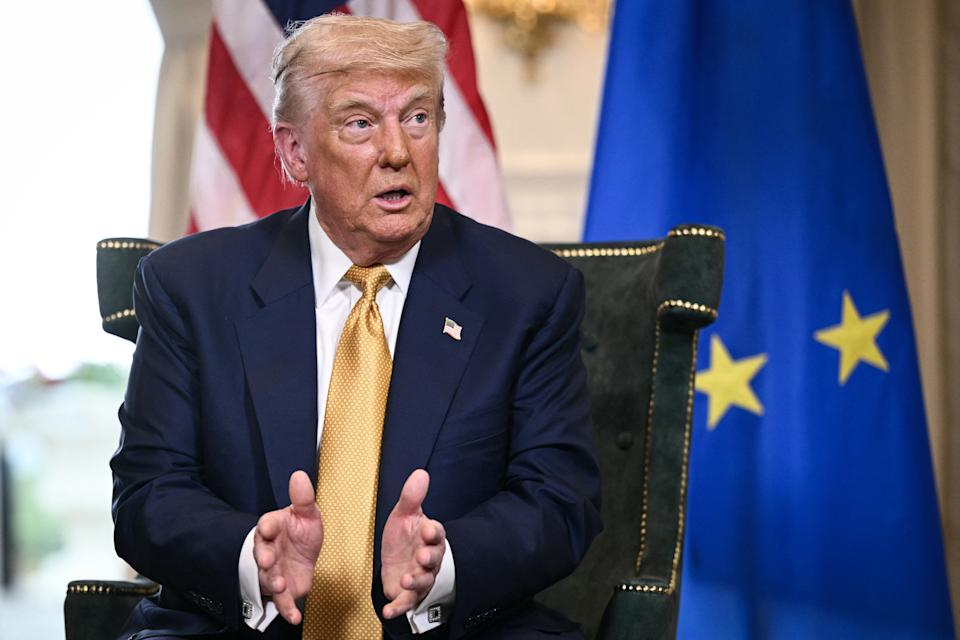
Japan Expects 1%-2% of $550 Billion US Fund to Be Investment
Key Points
- Japan expects only 1% to 2% of the $550 billion US fund to be direct investment, with the majority allocated to loans and loan guarantees.
- Tokyo anticipates saving approximately ¥10 trillion ($68 billion) through reduced tariff rates in its deal with the US.
- Profits from the investment portion will be split 90-10 in favor of the US, a shift from Japan's initial 50-50 proposal.
- The fund will support not only Japanese and US firms but also international companies, such as a Taiwanese semiconductor firm building in the US.
- Japan aims to implement the $550 billion fund during President Trump’s term, with government-backed organizations like JBIC and NEXI leading the financing.
Summary
Japan has agreed to a $550 billion fund with the US, but only 1% to 2% will be direct investment, with the rest primarily in loans and loan guarantees, as explained by chief negotiator Ryosei Akazawa. This structure, backed by Japanese institutions like JBIC and NEXI, aims to minimize Japan's financial exposure, with potential losses estimated at just tens of billions of yen. Profits from investments will be split 90-10 in favor of the US, a compromise from Japan's initial 50-50 proposal. Additionally, Japan expects to save ¥10 trillion ($68 billion) through lower tariffs, with rates anticipated to drop to 15% on cars and other goods. Akazawa emphasized that the fund isn’t a direct cash transfer to the US and will generate revenue through interest on loans and fees on guarantees. The initiative will also support international firms, such as a Taiwanese semiconductor company in the US. While Japan pushes for swift tariff reductions via executive order, details on implementation and timelines remain unclear, with no joint document signed yet. The deal, seen as a model by the Trump administration, aligns with a similar US-EU agreement involving $600 billion in investments and 15% tariffs. Japan aims to finalize the fund’s rollout during Trump’s term, balancing economic benefits with strategic concessions.
yahoo
July 28, 2025
Stocks

Thai, Cambodian Leaders Set for Peace Talks After Trump’s Tariff Deal Threats
Key Points
- Thai and Cambodian leaders, Phumtham Wechayachai and Hun Manet, are meeting in Kuala Lumpur to negotiate a ceasefire amid the deadliest border clash in over a decade, facilitated by Malaysian Prime Minister Anwar Ibrahim.
- The talks follow US President Donald Trump's tariff threats, pressuring both nations to halt hostilities, with US and Chinese envoys present to support peace efforts.
- Clashes, ongoing since July 24, have resulted in over 30 deaths and displaced 150,000 civilians, with both sides accusing each other of aggression.
- Thailand insists on a bilateral resolution, troop withdrawal, and cessation of lethal force for any ceasefire, while Cambodia is open to an unconditional halt to hostilities.
- The conflict stems from historical border disputes, exacerbated by differing interpretations of early 20th-century treaties, with recent escalations involving heavy artillery and airstrikes.
Summary
Thai and Cambodian leaders, Phumtham Wechayachai and Hun Manet, are set to meet in Kuala Lumpur on Monday to address the deadliest border conflict between the two nations in over a decade, facilitated by Malaysian Prime Minister Anwar Ibrahim, chair of ASEAN. The talks, prompted by US President Donald Trump’s tariff threats to withhold trade deals unless a ceasefire is reached, follow violent clashes since July 24 that have killed over 30 people and displaced 150,000 civilians. Both the US and China have sent envoys to support peace efforts, with Trump claiming credit for pushing the dialogue forward. Thailand remains skeptical of Cambodia’s commitment, prioritizing sovereignty and civilian safety, while Cambodia appears more open to an unconditional ceasefire. The conflict, rooted in historical border disputes over early 20th-century treaties, has seen heavy artillery and airstrikes, with both sides accusing each other of targeting civilians. Thailand demands a bilateral resolution and troop withdrawal, while economic pressures from potential US tariffs loom large, especially for trade-reliant Thailand. The talks aim to de-escalate tensions and restore peace, though deep-seated mistrust and territorial disagreements pose significant challenges.
yahoo
July 28, 2025
Stocks

'Haves and have-nots': The stock market thinks more consumers are reaching a breaking point
Key Points
- Consumer Discretionary Sector Struggles: The Consumer Discretionary sector (XLY) is underperforming, up only 0.3% year-to-date, making it the second-worst sector in the S&P 500, ahead of only Health Care.**
- Economic Disparities Impact Spending: High interest rates, economic uncertainty, and a K-shaped economy are affecting consumer spending, particularly among lower-income households, as noted by experts like Liz Ann Sonders.**
- Earnings Reflect Consumer Weakness: Recent earnings from companies like Chipotle (CMG), Hilton (HLT), and Hasbro (HAS) show declining sales and consumer price sensitivity, reinforcing a challenging environment for consumer-facing firms.**
- Wealthier Consumers Resilient: Companies targeting higher-income consumers, such as JPMorgan (JPM) and American Express (AXP), report sustained spending strength, contrasting with struggles in lower-income segments.**
- Potential for Recovery: Despite ongoing pressures, some beaten-down Consumer Discretionary stocks like Tesla (TSLA) show signs of short-term momentum, as per Bespoke Investment Group analysis.**
Summary
Consumer stocks are losing favor among US investors as the Consumer Discretionary sector (XLY) lags significantly behind the S&P 500, with only a 0.3% year-to-date gain, making it the second-worst performer. High interest rates, economic uncertainty, and shifting spending patterns are weighing on the sector, which includes major names like Nike (NKE), Target (TGT), Tesla (TSLA), and Amazon (AMZN). Experts highlight a K-shaped economy, with lower-income consumers cutting back, as seen in weaker earnings from Chipotle (CMG), Hilton (HLT), and Hasbro (HAS), while higher-income spending remains robust, per reports from JPMorgan (JPM) and American Express (AXP). Airlines like American Airlines (AAL) also note softer domestic travel demand. Despite significant outflows from the sector, some stocks show potential for short-term recovery, with Bespoke Investment Group identifying momentum in names like Tesla (TSLA). However, the consumer outlook remains fragile, with Oxford Economics suggesting more challenges before improvement in 2026. This disparity underscores a bifurcated consumer landscape where companies targeting price-sensitive shoppers face a hyper-promotional environment to drive demand.
yahoo
July 27, 2025
Stocks
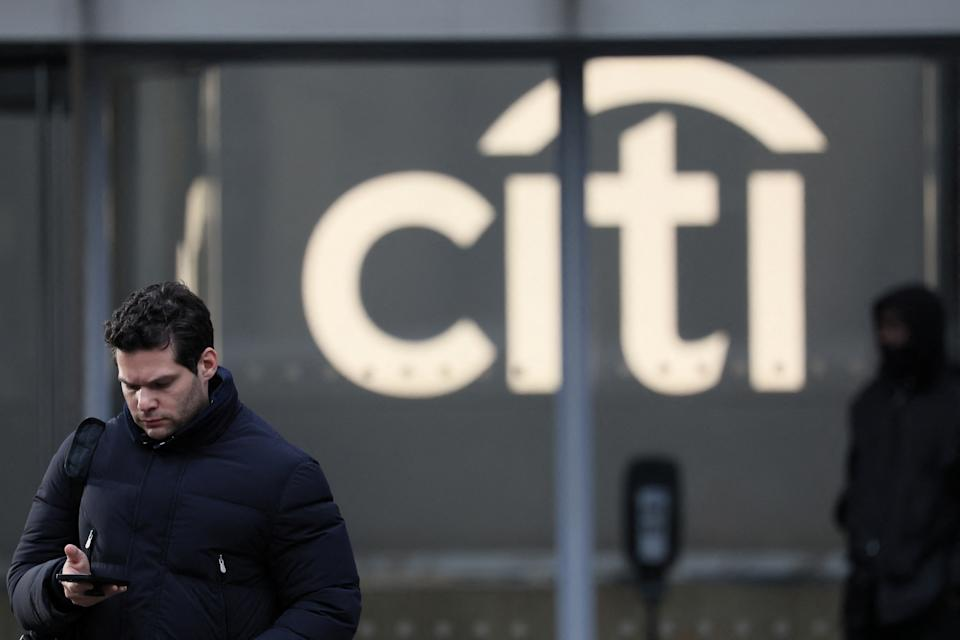
Federal Reserve meeting, July jobs report, and Big Tech earnings: What to watch this week
Key Points
- Record Highs: The S&P 500 and Nasdaq Composite closed at record levels last week, with gains of 1.5% and 1.3% respectively, while the Dow Jones Industrial Average rose by 1%.**
- Busy Week Ahead: Investors are preparing for a packed week with a Federal Reserve meeting, the July jobs report, and earnings from major tech companies like Apple, Amazon, Microsoft, and Meta.**
- Economic Data: Key economic updates include the second quarter GDP estimate, the Fed's preferred inflation gauge (core PCE), and labor market data, which could influence market directions.**
- Federal Reserve Focus: Markets anticipate no interest rate cut at the July Fed meeting (3% chance), with attention on potential dissents among FOMC members and a higher likelihood of a cut by September (64% chance).**
- Earnings Growth: S&P 500 earnings growth is pacing at 6.4% for the current quarter, with positive outlooks for 2025 and 2026 supporting the ongoing stock rally.**
Summary
The stock market has reached record highs, with the S&P 500 and Nasdaq Composite posting significant weekly gains of 1.5% and 1.3%, respectively, while the Dow Jones Industrial Average rose 1%. Investors are gearing up for a critical week on Wall Street, featuring a Federal Reserve meeting, the July jobs report, and earnings from Big Tech giants like Apple, Amazon, Microsoft, and Meta. Economic data releases, including the second quarter GDP estimate and the Fed's preferred inflation gauge (core PCE), will also shape market sentiment. Despite expectations of no rate cut in July, markets are pricing in a potential cut by September. Corporate earnings are strong, with the S&P 500 on track for 6.4% growth this quarter, bolstered by optimistic forecasts for future years. Additionally, speculative trading has surged, raising questions about market sustainability, though near-term equity returns remain promising according to Goldman Sachs. This confluence of events underscores a pivotal moment for investors as they navigate economic indicators, policy decisions, and corporate performance to start August.
yahoo
July 27, 2025
Stocks

Trump tariffs live updates: Japan says $550 billion 'investment' in US could finance Taiwanese chipmaker; Trump says EU deal '50-50'
Key Points
- Japan's $550 billion investment in the US, announced by President Trump, may partly finance a Taiwanese chipmaker, potentially TSMC, to build plants in the US, as suggested by Japanese trade negotiator Ryosei Akazawa.
- TSMC previously committed $100 billion for US investments, including three plants in Arizona, with one already operational, highlighting the strategic importance of semiconductor production.
- The US-Japan trade deal includes a 15% tariff on imported goods, but disagreements persist over profit sharing, with the US claiming 90% and Japan advocating for a split based on contributions.
- Trump's broader trade strategy involves tariffs ranging from 15% to 50% on various countries, with ongoing negotiations with the EU, India, Canada, and China, alongside finalized deals with the Philippines and Indonesia.
- South Korean company LG Electronics faces challenges from impending US tariffs, planning price adjustments and production shifts, while noting a consumer rush to buy appliances before tariff implementation.
Summary
President Trump recently announced a $550 billion investment from Japan into the US as part of trade negotiations to reduce tariffs, with potential funding directed toward a Taiwanese chipmaker, likely TSMC, for building US plants. TSMC had already pledged $100 billion for this purpose, including facilities in Arizona. The US-Japan deal imposes a 15% tariff on imports, though profit-sharing terms remain contentious. Meanwhile, Trump is navigating trade talks with the EU, India, Canada, and China, setting tariffs between 15% and 50%, and has finalized agreements with the Philippines and Indonesia at 19% tariffs. Additionally, South Korean firm LG Electronics is bracing for US tariffs starting August 1, with plans to adjust prices and shift production, as consumers preemptively purchase appliances. Trump's trade policies continue to reshape global economic dynamics, influencing supply chains and market uncertainties.
yahoo
July 27, 2025
Stocks

This week in Trumponomics: Three cheers for higher taxes
Key Points
- Trump's Trade Deal with Japan: President Trump announced a trade deal with Japan on July 23, imposing a 15% tariff on Japanese imports, including cars, up from an average of 1.6% before his presidency, marking a significant 13.4 percentage point increase.**
- Market Reactions: Despite the tariff hike, markets responded positively, with the S&P 500 reaching a record high and Japan's Nikkei index rising, as the 15% rate was lower than the anticipated 20-25% tariffs.**
- Broader Tariff Increases: Trump's policies have raised the average import tax from 2.5% to about 20%, affecting various countries and products, with specific tariffs on China (34-40%) and others like Canada and Mexico (10-25%).**
- Economic Impact: The Yale Budget Lab estimates these tariffs could generate $290 billion annually in revenue, offsetting much of the $375 billion tax cuts from Trump's recent legislation, effectively acting as a tax hike on American businesses and consumers.**
- Market Sentiment and Economic Outlook: Wall Street's positive reaction stems from clarity and tariffs aligning closer to initial forecasts (10-15%), though economic growth is expected to slow, corporate profits are declining, and tariff-induced inflation may emerge.**
Summary
President Trump's trade policies have significantly altered the landscape of U.S. import taxes, with a recent deal on July 23 imposing a 15% tariff on Japanese goods, up from 1.6% pre-presidency. Markets reacted positively, with the S&P 500 hitting a record high, as the rate was lower than the feared 20-25%. Overall, Trump's tariffs have raised the average import tax from 2.5% to 20%, impacting countries like China (34-40%) and generating an estimated $290 billion annually, offsetting much of a $375 billion tax cut. While Wall Street cheers the clarity, as tariffs align closer to initial 10-15% forecasts, economic concerns loom with slowing growth, declining corporate profits, and potential inflation. Trump's approval rating hovers near a second-term low of 45%, though tariff effects remain less felt by the public compared to other controversies. However, these tax hikes on businesses and consumers are real and may soon become more noticeable, potentially shifting public and market sentiment.
yahoo
July 26, 2025
Stocks

Retirement savers are getting a boost from low mutual fund fees
Key Points
- Historic Lows in Fees: Average equity mutual fund expense ratios in 401(k) plans have decreased significantly from 0.76% in 2000 to 0.26% in 2024, as per the Investment Company Institute (ICI) report.**
- Impact of Fees on Savings: A mere 0.5% difference in fees over 35 years can reduce a retirement account balance by over $37,000, demonstrating the long-term impact of lower fees.**
- Target-Date Funds Also Cheaper: Expense ratios for target-date funds, popular among retirement savers, have dropped from 0.67% in 2008 to 0.29% currently.**
- Fee Transparency Challenges: While fees are often hidden, employers must provide fee disclosure notices, and resources like FINRA’s fund analyzer can help uncover costs.**
- Advice for Savers: Opting for low-cost index funds or options with expense ratios below 0.5% can help maintain the trend of reduced fees.**
Summary
A recent Investment Company Institute (ICI) report brings good news for retirement savers: the average expense ratios for equity mutual funds in 401(k) plans have hit historic lows, dropping from 0.76% in 2000 to 0.26% in 2024. This reduction, though seemingly small, has a significant impact over time; for a $25,000 balance growing at 7% over 35 years, a 0.5% higher fee could cost over $37,000 in retirement savings. Target-date funds, a favored retirement vehicle, also saw fees decline from 0.67% in 2008 to 0.29% now. ICI’s Sarah Holden emphasized that this decades-long trend of declining fees benefits investors planning for their financial future. However, uncovering these fees can be tricky, though employers must provide disclosure notices, and tools like FINRA’s fund analyzer assist in transparency. The report underscores the importance of low-cost options like index funds to maximize retirement savings, as fees—whether direct or indirect—reduce investment returns and ultimately impact the money available for retirement.
yahoo
July 26, 2025
Stocks

Trump tariffs live updates: Trump says EU deal '50-50'; US, Japan differ on trade deal profits
Key Points
- Trade Deal with EU Uncertain: President Trump estimates a "50-50" chance of securing a trade deal with the European Union before the August 1 deadline, with a meeting scheduled in Scotland to push negotiations forward.**
- US-Japan Deal Faces Challenges: Despite a recent trade agreement involving a $550 billion Japanese investment and a 15% tariff on imports, disagreements over profit sharing (US proposing 90-10 split, Japan wanting contribution-based) are creating tensions.**
- Tariff Policies Expanding: Trump announced tariffs ranging from 15% to 50% for various partners, with tougher rates for difficult negotiations, alongside new deals with the Philippines and Indonesia at 19% tariffs.**
- Canada Negotiations Stalled: Trump expressed frustration with Canada, hinting at imposing a 35% tariff on goods outside the US-Canada-Mexico agreement if no deal is reached.**
- China Deal in Progress: Discussions with China are advancing, with Trump noting the "confines of a deal" as both sides prepare for upcoming talks.**
Summary
President Trump provided updates on multiple trade negotiations, expressing cautious optimism about a potential EU deal with a "50-50" chance ahead of the August 1 deadline, as European Commission President Ursula von der Leyen prepares to meet him in Scotland. Meanwhile, a recently announced US-Japan trade agreement, involving a $550 billion investment and 15% tariffs, is already strained over profit-sharing disputes. Trump also outlined a broader tariff strategy, setting rates between 15% and 50% for various partners, with new 19% tariffs on imports from the Philippines and Indonesia. Negotiations with Canada appear stalled, with Trump considering a 35% tariff on non-agreement goods, while talks with China show progress toward a deal. Additionally, Trump highlighted upcoming beef exports to Australia and ongoing tariff impacts on businesses like Boston Beer Company, which is managing costs through price increases. These developments reflect Trump's aggressive trade stance, aiming to reshape global economic relationships through tariffs and strategic investments, though challenges and disagreements persist across multiple fronts.
yahoo
July 26, 2025
Stocks

Trump clashes with Powell over Fed renovations during unusual visit, says he'd 'love' lower interest rates
Key Points
- Trump's Visit to Federal Reserve: President Trump made a rare visit to the Federal Reserve, touring the $2.5 billion renovation site with Chairman Jerome Powell, amidst ongoing criticism of the project's costs.**
- Cost Dispute: A public disagreement arose when Trump claimed the renovation cost had risen to $3.1 billion, which Powell corrected, clarifying that the higher figure included a third, previously completed building.**
- Interest Rate Pressure: Trump used the visit to push for lower interest rates, expressing hope that Powell would "do the right thing," while downplaying tensions and dismissing notions of firing the Fed chair.**
- Political and Legal Scrutiny: The Fed faces mounting pressure from Trump allies, including calls for reviews, lawsuits over transparency, and potential congressional investigations into its operations and renovation spending.**
Summary
President Trump made an unprecedented visit to the Federal Reserve on July 24, 2025, touring the $2.5 billion renovation project of the Marriner Eccles and East Buildings with Chairman Jerome Powell. The visit, marked by a public spat over costs—Trump cited a $3.1 billion figure, which Powell corrected as including a previously renovated third building—highlighted ongoing tensions over the project's expense. Trump also pressed Powell for lower interest rates, though he distanced himself from firing the Fed chair, focusing instead on project oversight. Accompanied by Republican senators and aides, Trump critiqued the "luxurious" renovations but avoided labeling them a fireable offense. Meanwhile, the Fed defended the high costs, citing security upgrades and unforeseen issues like asbestos. Beyond the visit, Powell faces broader challenges, including calls for internal reviews, lawsuits over transparency, and potential congressional probes from Trump allies. Despite these pressures, the Fed expressed gratitude for Trump’s encouragement to complete the project, which began in 2022 and is set for completion by 2027. This event underscores the intersection of political influence, monetary policy, and public spending scrutiny surrounding the central bank.
yahoo
July 25, 2025
Stocks
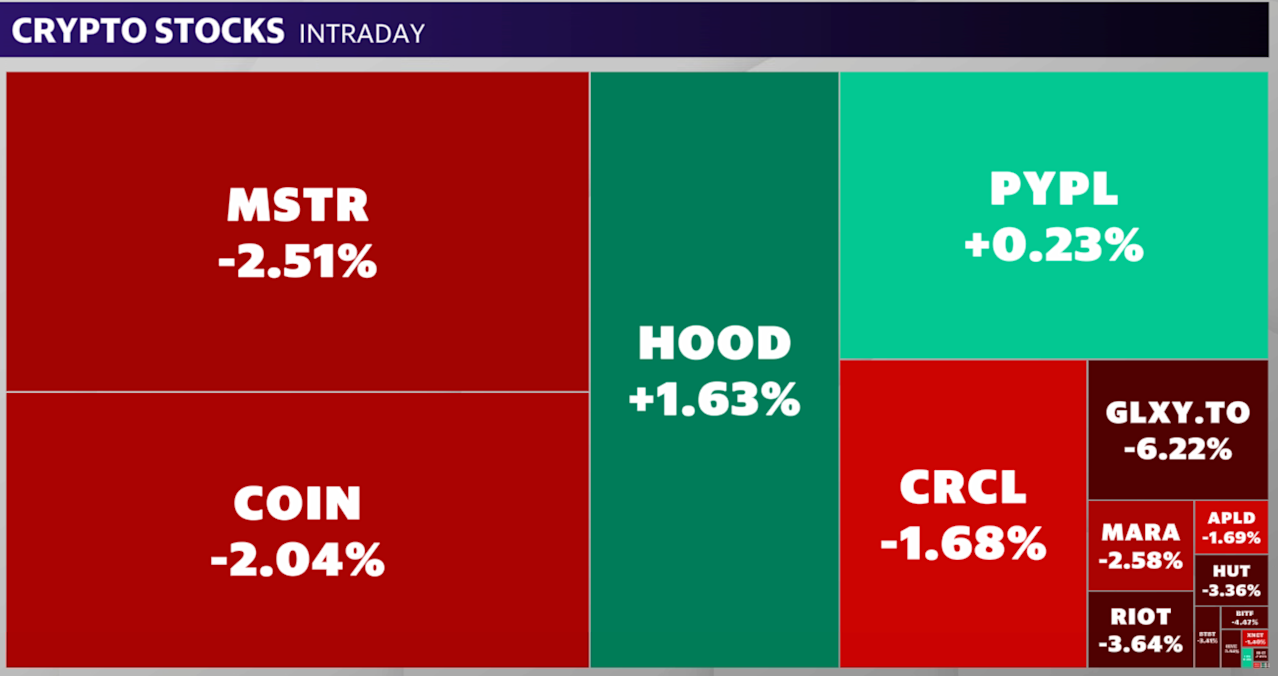
Hulk Hogan leaves behind a thriving business at WWE: Opening Bid top takeaway
Key Points
- Tesla (TSLA) reported a disappointing quarter, while Alphabet (GOOGL) exceeded expectations with strong earnings.
- Upcoming earnings from Microsoft (MSFT) and Amazon (AMZN) are anticipated next week, alongside a Federal Reserve interest rate decision.
- TKO Group (TKO), formed by the WWE-UFC merger, is in focus following the passing of wrestling icon Hulk Hogan at 71.
- WWE, under TKO, secured a $5 billion, 10-year deal with Netflix for "Raw" and reported a 23% sales increase and 38% profit growth in the latest quarter.
- TKO Group shares have risen 57% over the past year, with analysts largely bullish on the stock.
Summary
This article covers a dynamic week in financial markets, highlighting Tesla's underwhelming quarterly results and Alphabet's strong earnings performance. Attention now shifts to upcoming earnings from tech giants Microsoft and Amazon, alongside a Federal Reserve interest rate decision. A significant focus is on TKO Group, formed by the WWE-UFC merger, following the death of wrestling legend Hulk Hogan at 71 from cardiac arrest. Hogan, a pivotal figure in popularizing wrestling globally during the 1980s, leaves behind a robust WWE business within TKO. The company recently secured a landmark 10-year, $5 billion deal to stream "Raw" on Netflix and reported impressive quarterly growth with a 23% sales increase and 38% rise in operating profits. TKO's stock has surged 57% over the past year, earning bullish ratings from most analysts. The article also notes WWE's potential for further international expansion and a new WWE Network deal in 2026, with earnings set for August 5. Additionally, it touches on broader market drama involving political and economic figures, underscoring a busy period for investors.
yahoo
July 25, 2025
Stocks
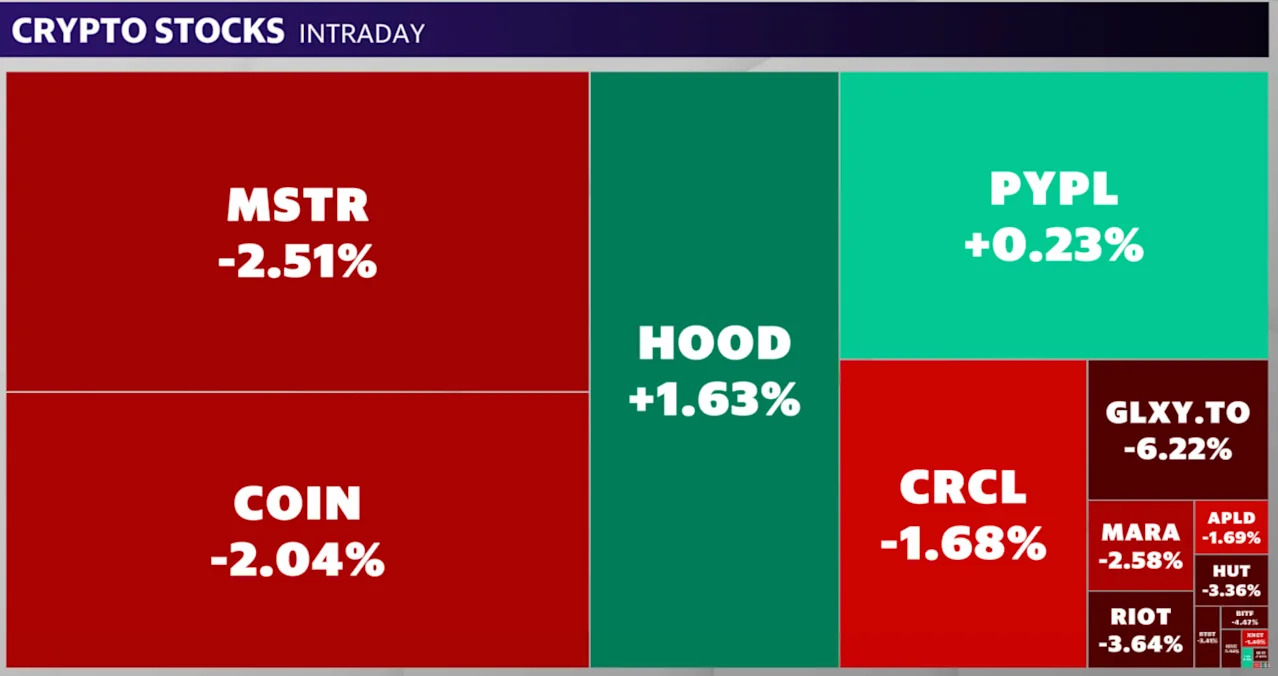
Stock market today: Dow, S&P 500, Nasdaq nudge higher in search for more records
Key Points
- US stocks stabilized near all-time highs on Friday, with the Dow Jones Industrial Average, S&P 500, and Nasdaq Composite each rising about 0.1%, following a week of significant earnings and trade developments.
- A US-Japan trade pact boosted market optimism, though concerns linger about profit-sharing in a proposed $550 billion US investment fund, while a potential US-EU deal is also in progress.
- President Trump's visit to the Federal Reserve, initially sparking speculation of conflict with Fed Chair Jerome Powell, concluded with Trump downplaying any intent to fire Powell, easing market concerns.
- Intel's stock dropped despite beating earnings expectations, as the company announced layoffs, canceled factory projects, and shifted focus to internal use of its new manufacturing process, raising doubts about its recovery.
- Investors are bracing for a busy upcoming week with the Fed's policy meeting, US jobs report, and major earnings from companies like Apple, Meta, and Microsoft, alongside an August 1 deadline for trade deals to avoid tariff hikes.
Summary
US stocks hovered near record highs on Friday, with the Dow Jones, S&P 500, and Nasdaq each gaining roughly 0.1%, as investors digested a week of major earnings and trade news. A US-Japan trade agreement lifted spirits, though tensions over a $550 billion investment fund's profit-sharing terms and a looming US-EU deal added uncertainty. President Trump's unexpected Federal Reserve visit, initially raising fears of a clash with Chair Jerome Powell, ended with reassurances against dismissal, calming markets. Intel's stock fell despite strong earnings, hurt by layoffs and a pivot to internal manufacturing focus, casting doubt on its recovery. Meanwhile, crypto stocks declined as the US dollar strengthened, and Phillips 66 saw gains from robust refining margins. Investors are now eyeing a critical week ahead, featuring the Fed’s policy meeting, a US jobs report, earnings from giants like Apple and Microsoft, and an August 1 deadline for trade deals to avert tariff hikes. While optimism persists, some on Wall Street question if the rally is driven by FOMO rather than fundamentals, prompting profit-taking ahead of these pivotal events.
yahoo
July 25, 2025
Stocks
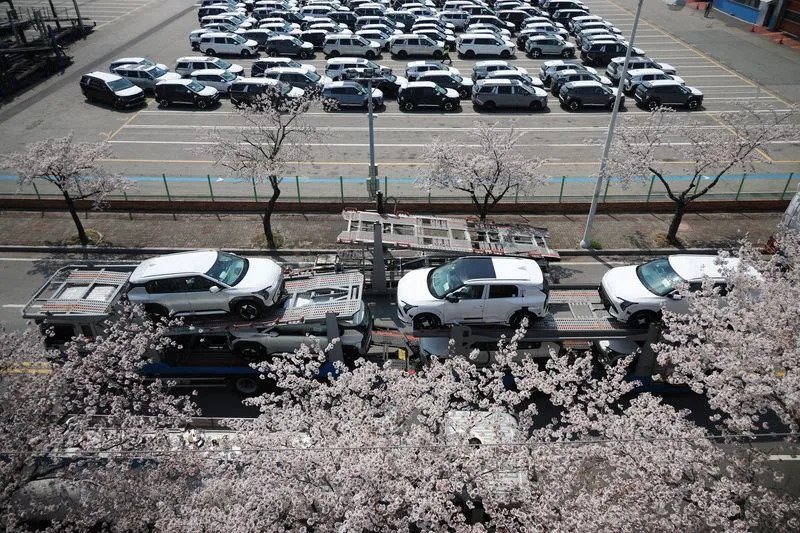
Kia Corp takes $570 million hit from US tariffs in second quarter
Key Points
- Kia Corp reported a significant financial impact of 786 billion won ($570 million) due to U.S. tariffs during the April to June period.
- The company's operating profit dropped by 24% to 2.76 trillion won in the second quarter compared to the previous year.
- Despite the profit decline, Kia saw a 5% increase in U.S. sales, driven by consumer fears of rising vehicle prices due to tariffs.
- Strong sales of the new Carnival hybrid SUV contributed to Kia's performance in the second quarter.
- Kia shares experienced a decline of 1.7% following the announcement.
Summary
Kia Corp, South Korea's prominent automaker and the world’s third-largest alongside Hyundai Motor, disclosed a substantial financial setback of 786 billion won ($570 million) due to U.S. tariffs in the second quarter of the year. This contributed to a 24% plunge in operating profit, which fell to 2.76 trillion won compared to the same period last year. Despite the profit downturn, Kia managed a 5% rise in U.S. sales, fueled by consumers purchasing vehicles ahead of anticipated price hikes resulting from the tariffs. The company also benefited from robust sales of its new Carnival hybrid SUV during the April to June timeframe. Meanwhile, South Korea is engaging in discussions to delay the imposition of these U.S. tariffs and seeks cooperation in mutual areas. Following the financial report, Kia’s shares dropped by 1.7%, reflecting investor concerns over the impact of tariffs on the company’s profitability.
yahoo
July 25, 2025
Stocks

US new home sales below expectations in June; housing supply rises
Key Points
- New U.S. single-family home sales rose by 0.6% in June to a seasonally adjusted annualized rate of 627,000 units, below the forecasted 650,000 units.
- Inventory of unsold new homes reached 511,000 units, the highest since October 2007, with a supply duration of 9.8 months at the current sales pace.
- Median new home price decreased by 2.9% year-over-year to $401,800, with builders increasingly cutting prices to attract buyers.
- Sales varied regionally, increasing in the South (5.1%) and Midwest (6.3%), but declining sharply in the Northeast (27.6%) and West (8.4%).
- Higher mortgage rates, averaging just under 7% for a 30-year fixed-rate, and economic policies continue to impact homebuilding and sales.
Summary
New U.S. single-family home sales in June grew by a modest 0.6% to an annualized rate of 627,000 units, falling short of economists' expectations of 650,000 units, as reported by the Commerce Department's Census Bureau. This slowdown, attributed to mortgage rates hovering just under 7% for a 30-year fixed-rate loan, has led to an inventory of unsold homes reaching 511,000 units—the highest since October 2007. With a supply duration of 9.8 months, the glut is pressuring prices, with the median new home price dropping 2.9% to $401,800 year-over-year. Builders are increasingly cutting prices to attract buyers, a trend noted in a recent National Association of Home Builders survey. Regionally, sales rose in the South and Midwest but plummeted in the Northeast and West. Meanwhile, the Federal Reserve, having cut rates three times in 2024, is expected to maintain its benchmark rate between 4.25%-4.50% at its upcoming meeting. Economic concerns, including potential inflation from protectionist trade policies, alongside declining homebuilding and permits, suggest residential investment will continue to drag on GDP growth in the second quarter.
yahoo
July 24, 2025
Stocks
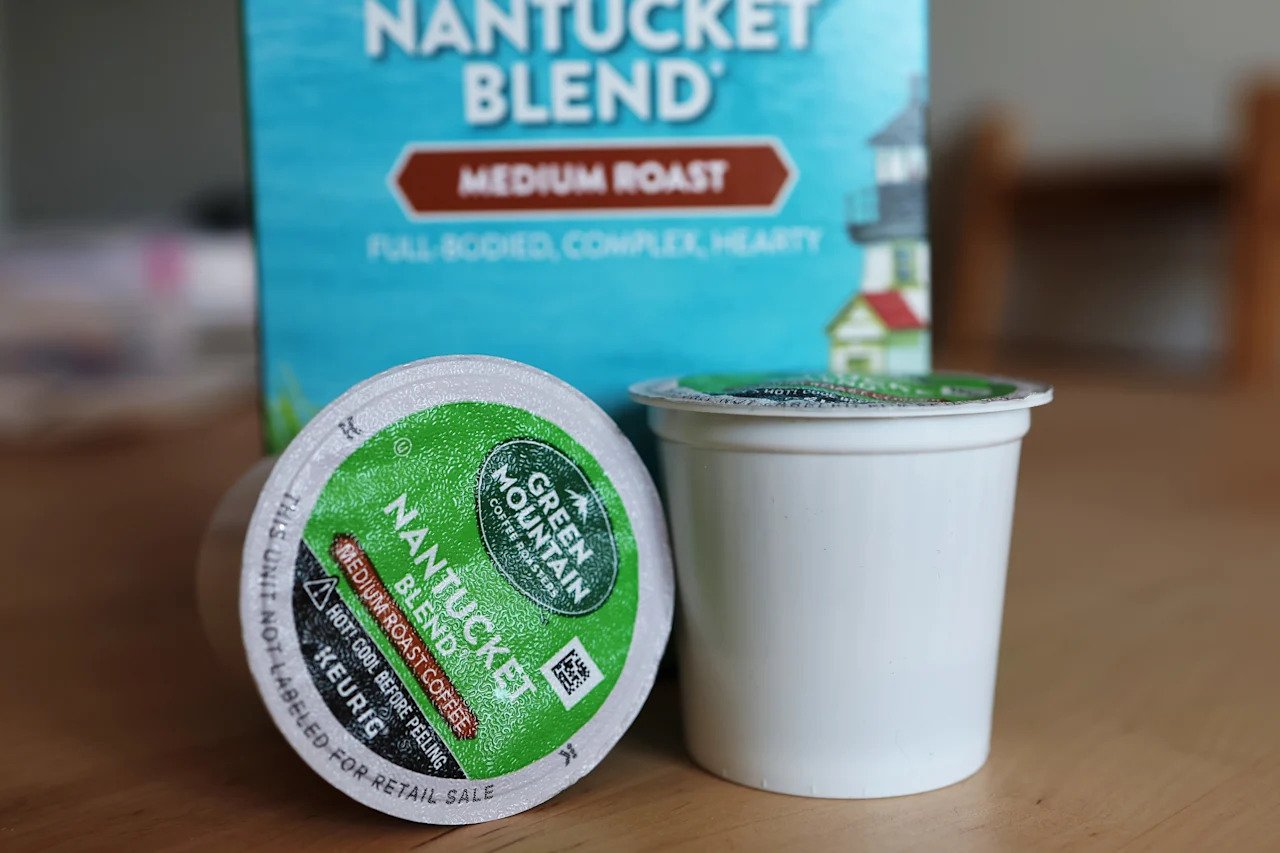
Trump tariffs live updates: Trump lifts tariff baseline rate, warns countries face 15-50% range
Key Points
- New Tariff Baseline: President Trump has announced a new baseline tariff rate for US trading partners ranging from 15% to 50%, with higher rates for countries deemed difficult to work with.**
- Trade Deals Progress: The US has finalized a trade deal with Japan at a 15% tariff rate and is nearing a similar agreement with the EU, potentially at 15% instead of the threatened 30%.**
- Other Agreements: Deals with the Philippines and Indonesia include tariffs of 19% on their goods entering the US, with specific conditions like no taxes on most US exports to these countries.**
- Retaliatory Measures: The EU has approved a retaliatory tariff package on over $100 billion of US goods if no deal is reached, matching Trump's threatened 30% rate.**
- Economic Impacts: Tariffs are already affecting industries, such as Brazil's citrus sector facing a potential 50% tariff and Keurig Dr. Pepper reporting sales drops due to tariff pressures.**
Summary
President Trump has introduced a new tariff baseline of 15% to 50% for US trading partners, with higher rates for less cooperative nations, as announced at an AI summit in Washington, DC. This shift from the previous 10% rate coincides with progress on trade deals, including a 15% tariff agreement with Japan, which also involves a $550 billion investment in the US. A similar deal with the EU is nearing completion, potentially at 15% instead of the threatened 30%, though the EU has prepared retaliatory tariffs on over $100 billion of US goods if negotiations fail. Additional agreements with the Philippines and Indonesia set tariffs at 19%, with favorable terms for US exports. Meanwhile, potential deals with India and Canada face higher proposed tariffs of 25% to 35%. The tariffs are already impacting industries, with Brazil's citrus sector reeling from a possible 50% rate and Keurig Dr. Pepper reporting a 22% drop in brewer sales due to tariff-related pressures and commodity inflation. These trade policies are creating global economic ripples, influencing prices, production, and business strategies even before full implementation.
yahoo
July 24, 2025
Stocks
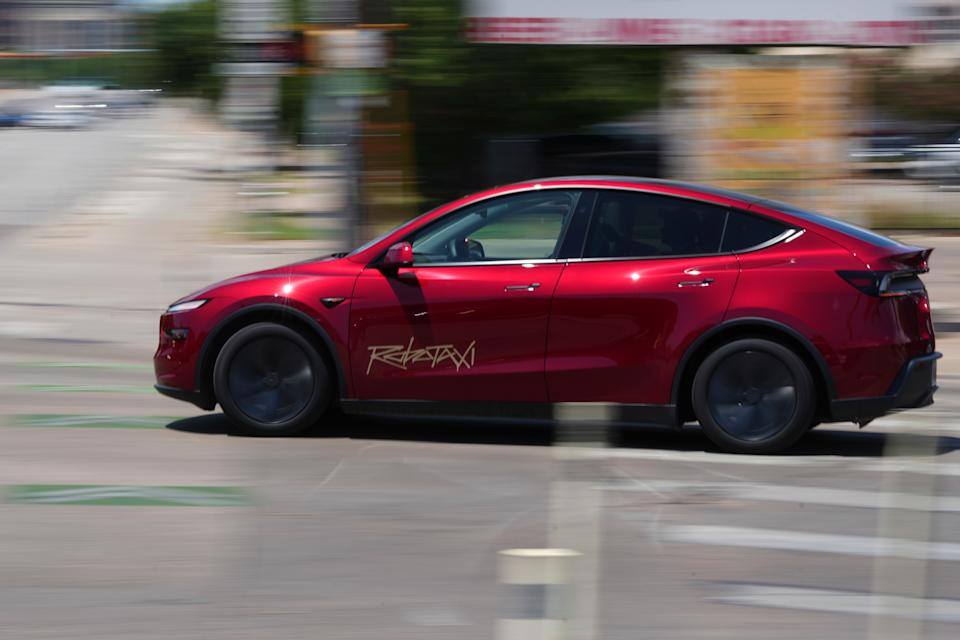
Microsoft Hack Hits Hundreds of Firms, Agencies as Damage Spreads
Key Points
- Rapid Increase in Victims: The number of organizations compromised by a security vulnerability in Microsoft’s SharePoint servers has surged over six-fold in just a few days, with around 400 entities affected, up from an initial estimate of 60, according to Eye Security.**
- Geographic Spread: Most victims are in the US, followed by Mauritius, Jordan, South Africa, and the Netherlands, with high-profile breaches including the US National Nuclear Security Administration and the National Institutes of Health.**
- State-Sponsored Attacks: Microsoft attributes the attacks to Chinese state-sponsored hacking groups like Linen Typhoon and Violet Typhoon, amid ongoing US-China tensions over cybersecurity and trade.**
- Vulnerability Exploitation: The SharePoint flaws allow hackers to steal keys and impersonate users, potentially accessing sensitive data, though Microsoft has released patches to address the issue.**
- Broader Implications: Experts warn the true number of victims may be higher, with hackers possibly maintaining deep network access for espionage, targeting government, education, and technology sectors globally.**
Summary
A critical security vulnerability in Microsoft’s SharePoint servers has led to a sharp rise in cyberattacks, with over 400 organizations compromised, a six-fold increase in days, as reported by Eye Security. Predominantly affecting US entities, the breaches also span Mauritius, Jordan, South Africa, and the Netherlands, impacting key institutions like the US National Nuclear Security Administration and the National Institutes of Health. Microsoft has pointed to Chinese state-sponsored groups, including Linen Typhoon and Violet Typhoon, as culprits, escalating US-China cybersecurity tensions. The flaws enable hackers to steal access keys and infiltrate networks, though patches have been issued. Experts caution that the actual victim count may be underreported, with potential for deeper espionage across government, education, and tech sectors worldwide. While no data breaches are confirmed, the US and affected nations are collaborating with Microsoft to mitigate risks. This incident underscores ongoing global cybersecurity challenges and the sophisticated nature of state-backed hacking campaigns.
yahoo
July 24, 2025
Stocks
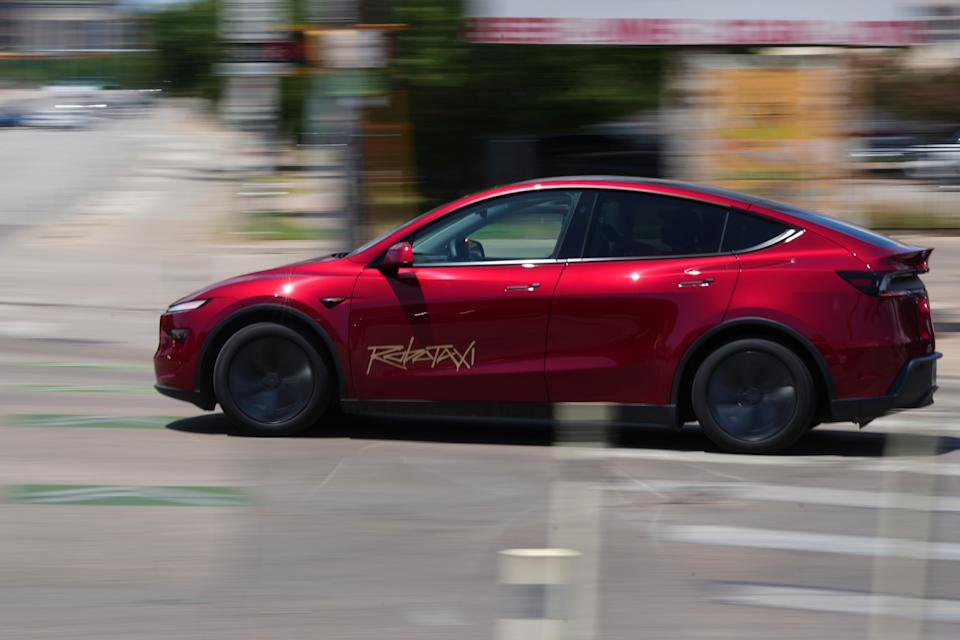
Trump Says Countries Will Face Tariffs Ranging From 15% to 50%
Key Points
- Tariff Floor Rising: President Trump has indicated that the minimum tariff rate for reciprocal tariffs will be at least 15%, with rates potentially ranging between 15% and 50%, marking an increase from earlier mentions of a 10% baseline.**
- Global Trade Impact: Trump plans to impose tariffs on nearly all US trading partners, with over 150 countries receiving tariff letters, though some smaller nations in Latin America, the Caribbean, and Africa may face a 10% baseline.**
- Negotiations and Deals: While Trump has expressed reluctance for extensive negotiations, he has reduced Japan's tariff from 25% to 15% in exchange for market access and investment commitments, with similar discussions ongoing with South Korea and the Philippines.**
- EU and Other Nations: The European Union and countries like India are seeking agreements to lower tariffs before the August 1 deadline, with Trump open to reduced rates if the EU allows greater access for American businesses.**
- Economic Concerns: Vietnam anticipates a significant drop in exports to the US—potentially by a third—if higher tariffs are implemented, highlighting the broader economic implications for affected nations.**
Summary
President Donald Trump has signaled a tougher stance on trade by setting a minimum tariff rate of 15%, up from a previously mentioned 10%, with potential rates reaching 50% for some countries, as part of his reciprocal tariff policy ahead of an August 1 deadline. Speaking at an AI summit in Washington, Trump outlined plans to impose duties on nearly all US trading partners, with over 150 countries receiving tariff notifications. While smaller nations in Latin America, the Caribbean, and Africa may face a 10% baseline, larger economies are under pressure to negotiate. Japan recently secured a reduction from 25% to 15% by easing restrictions on US products and supporting a $550 billion investment fund, with South Korea and the Philippines pursuing similar deals. The European Union and India are also pushing for agreements to mitigate tariff impacts. Trump has downplayed extensive negotiations, framing tariff letters as "deals," though he remains open to lowering rates for countries that expand market access for American businesses. Meanwhile, Vietnam fears a drastic reduction in US exports—potentially by a third—if higher tariffs take effect, underscoring the global economic stakes. These policies reflect Trump's aggressive approach to reshaping trade relationships, with significant implications for international commerce.
yahoo
July 24, 2025
Stocks